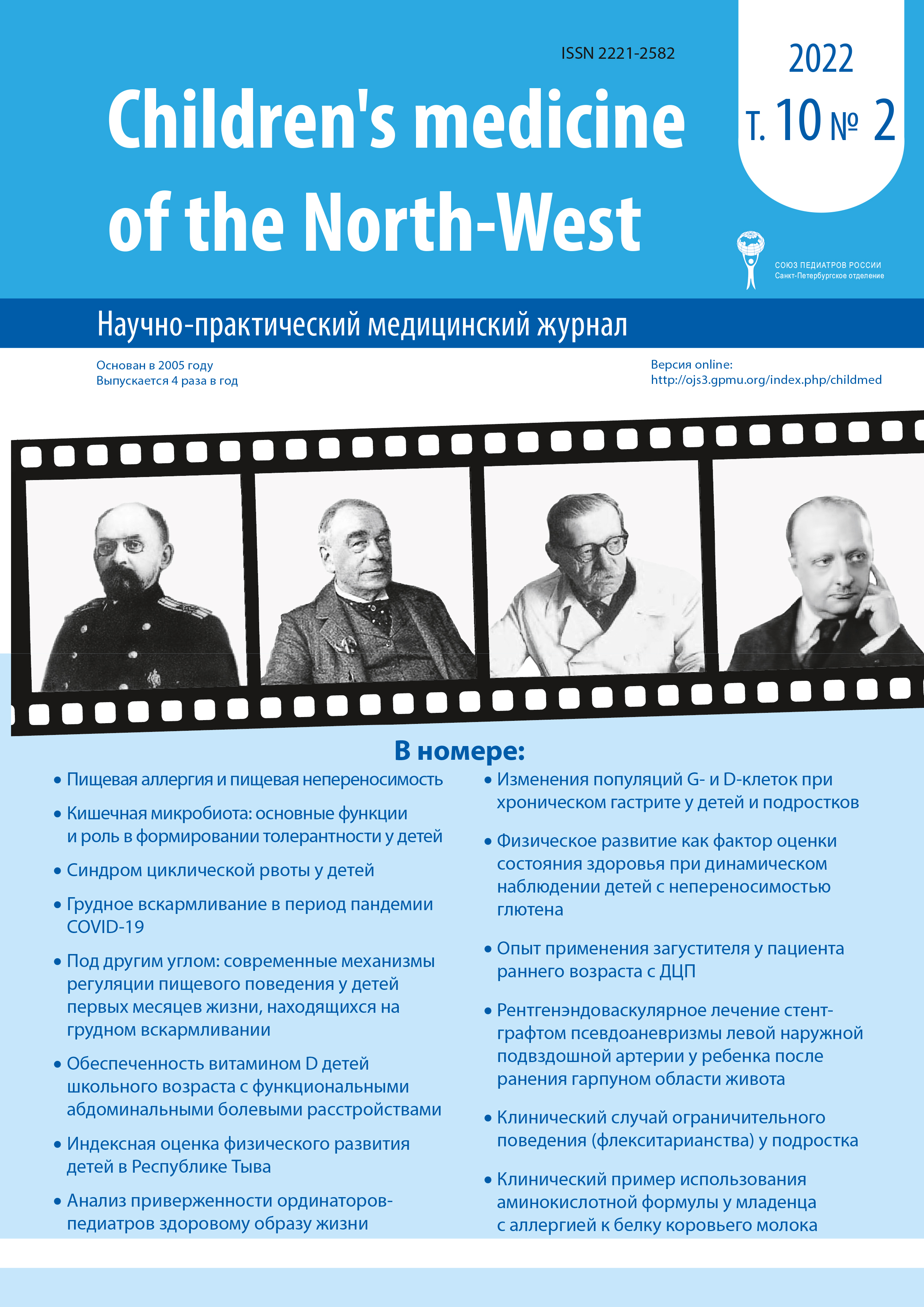Index assessment of physical development of children in the republic of Tyva
Abstract
In an unfavorable demographic situation, the protection of the health of the child population is of particular importance, the leading indicator of which is physical development. Purposes and tasks: to assess the physical development of preschoolers in the Republic of Tyva using anthropometric indices. Materials and methods. A survey of 2015 children (1419 Tuvinians and 596 representatives of the newcomer population) aged 3 to 7 was carried out. The body type was determined using the Vervek-Vorontsov index “stenia” and the somatotype was determined using the method of R.N. Dorokhov and I.I. Bakhrakh as modified by I.M. Vorontsov. Results. Mesomorphism was the main body type in children according to the Stenia index, and more often among Tuvinians (70-79%) than among peers of the newcomer population (56-60%; p <0.001); in boys more often than in girls (p <0.001). Dolichomorphies (predominance of linear growth) were higher in children of the newcomer population (39-43%) than in Tuvans (20-29%; p <0.001); in girls more often than in boys in both ethnic groups (p <0.001); which is possibly associated with an earlier “half -height growth spurt” in girls. The mesosomatotype was determined in the majority of preschoolers (59-68%); in boys more often than in girls (p = 0.01). The second most common was the microsomatotype (22-30%); more often in girls than in boys (p = 0.02). The frequency of macrosomatotype was the lowest and practically the same in all groups. Conclusion. We have identified regional and ethnic features of physical development. The analysis of factors that have a negative impact requires in -depth study.



